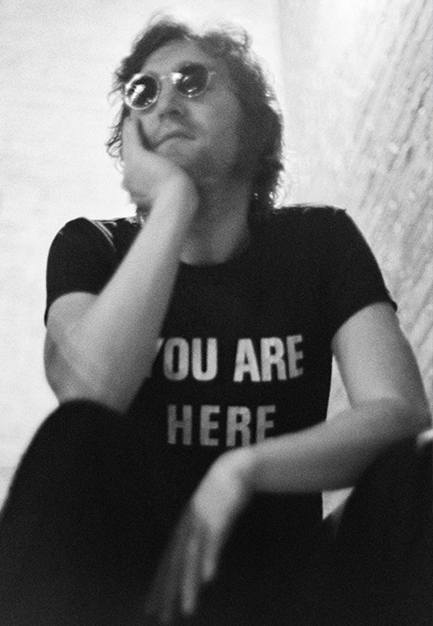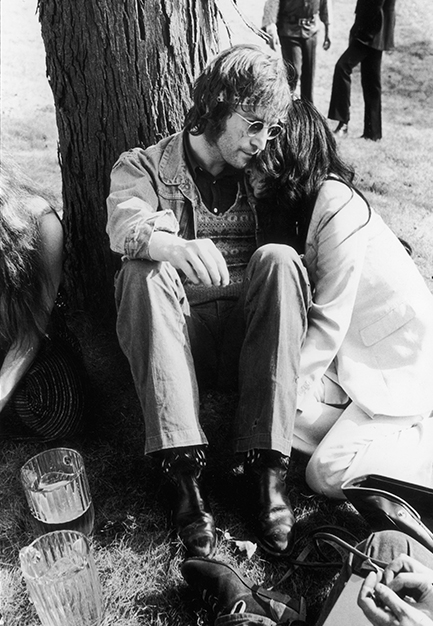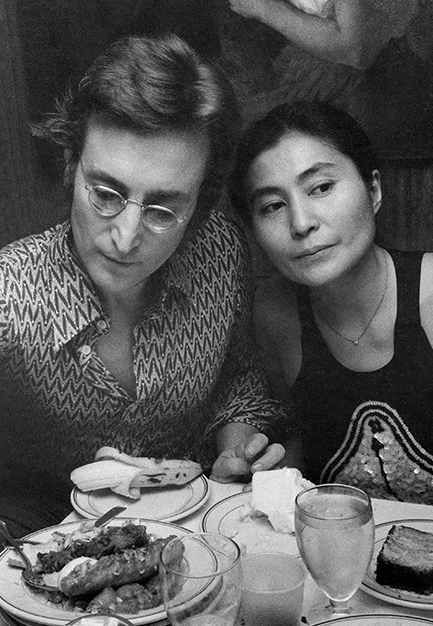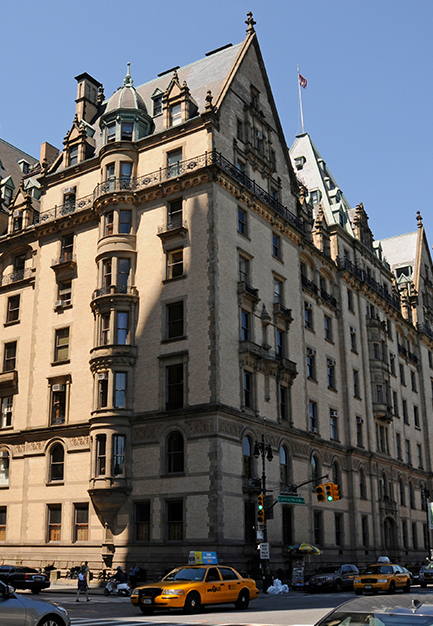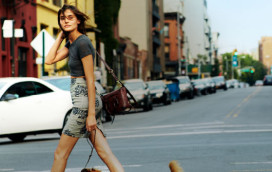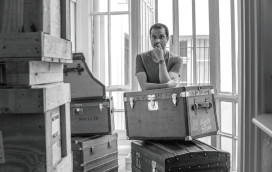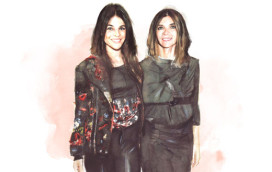When John Lennon left Britain to begin a new life in America in the summer of 1971, the transatlantic move represented something more than just a change of location. Encouraged by his wife Yoko Ono, it was a decisive step in shedding what remained of his Beatle skin, and, he hoped, towards reinventing himself as a radical chic bohemian. He no longer wanted to be just a rock star.
Happily assured of wealth for the rest of his life from the songs he’d already written, his emigration was achieved in some style as he and Yoko moved into two adjacent suites on the seventh floor of the elegant St. Regis Hotel on New York’s East 55th Street. The St. Regis played a significant role in mid-century Manhattan life, attracting a mixture of high society and bohemia that made it the place to be and be seen. From there Lennon would fall in love with New York, as Yoko showed him around what he described as her “old stomping ground” – that is, the city in which she’d begun her career as a conceptual artist.
The St. Regis and Manhattan were a complete change from the Lennons’ previous home and surroundings, Tittenhurst Park, a Georgian mansion and 72-acre estate near Ascot, 20 miles southwest of London. There, the nearest neighbors had been a small herd of former seaside donkeys in a field outside the couple’s bedroom window, along with a Hare Krishna troupe, who, until their chanting got on his nerves, Lennon had allowed to decorate a small temple in his extensive gardens.
The tranquility of the English countryside might have helped him write and record the Imagine album, which would top the U.S. charts shortly after he and Yoko arrived in New York, but it was too sleepy for the ever-sparky Lennon and his ambitious wife. Brash, boisterous New York, with its cosmopolitan population and aggressive cultural energy, was the place to be.
At the time, I was a journalist at London’s Evening Standard newspaper and had been befriended by the Lennons during the break-up of the Beatles over the previous two years. So I was intrigued when, a few weeks after they moved to New York, they invited me to fly across and join them at The St. Regis and then celebrate John’s 31st birthday by attending an exhibition of Yoko’s art at the Everson Museum of Art in Syracuse, NY.
Almost as soon as I got to the hotel, John was enthusing about his new hometown. In a grand suite stacked high with newspapers, magazines, fan mail, posters and film-editing equipment, he raved about how the jaunty abrasiveness of New Yorkers reminded him so much of the people of his Liverpool youth. Like every craze he had, and New York was his latest, he threw himself into it with total enthusiasm.
Before then, the only time he had visited the U.S. had been with the Beatles, where the band were held prisoners at the heart of mass hysteria. But now, having “divorced” himself from the group, as he put it, he was getting to know America properly, starting with New York. And he talked about how, just a few days earlier, fellow St. Regis guest Fred Astaire had knocked on the door of his suite to say “hello” and immediately agreed to appear in an experimental film that the Lennons were shooting there. The following day, Jack Palance, also a hotel guest, was happy to be filmed there, too.
To John, the openness and acceptance he and Yoko experienced in the U.S. were in stark contrast to the treatment they’d received back in the U.K. in recent months. There, Yoko had been overwhelmingly blamed for the Beatles splitting up, and John had been forced to defend her, while a public exhibition of his erotic lithographs had provoked predictable tabloid outrage and inevitable police charges. (The private gallery owner presenting the exhibition later got off on a technicality.)
As he fashioned his new ex-Beatle persona, Americans, and especially New Yorkers, would, he felt, respect “nutty John”, as he would laughingly call himself, more than his own countrymen. “Look at this,” he said to me, picking up a letter. “A university in Tennessee is offering me $60,000 just to talk. Just to talk! I don’t even have to bother singing! It’s unbelievable. Invitations like this come every day.”
Indeed, one invitation, the retrospective of Yoko’s work in Syracuse, had already been accepted. And when we flew up there the next day, accompanied by Phil Spector, who had just produced Imagine, and secretary May Pang, who would become John’s lover two years later, it was unabashed lecturers as much as their students who mobbed the ex-Beatle and his wife.
This appealed to John’s new image of himself. As he moved around the exhibition, with its water theme, which also contained works by Andy Warhol, Bob Dylan, Allen Ginsberg and Willem de Kooning, he let it be known that he wanted to be considered an artist, too. Although, as usual, there was a joke in his artistic contribution – a plastic bag half-filled with water which he titled Napoleon’s Bladder.
Two years earlier he had written and recorded the anthem Give Peace A Chance, a song that students across America were now singing at every anti-Vietnam War demonstration. So, later that day, he sat singing it for a group of Syracuse college kids as slices of his birthday cake were passed around. His career as a musician (not to mention his lack of academic qualifications) had meant there had been no college for him after the age of 18, so to be lionized at universities was flattering.
He didn’t want to be one of “four gods on stage” any more, he told me that week. Deep down he wanted to be considered an intellectual, and, always on the side of the underdog, a beacon of protest.
With this in mind, the next day we were off in a limo, followed by a caravan of media vehicles, to visit a tiny Native American reservation, the inhabitants of which were taking on the state of New York, which was claiming the right to build a road through their land. Whether the publicity the visit generated did any good or not, I have no idea, but, unbeknownst to John, the regular protests with which he had now become associated were not going unnoticed. The FBI was compiling a file on him as an anti-war activist.
Back in New York, the Lennons’ HQ in The St. Regis would have looked to the FBI, had they seen it, like the headquarters of a counterculture movement, as the notorious social activists, Abbie Hoffman and Jerry Rubin, quickly latched on to the politically naive John. Quite what the front reception desk thought as the Lennons’ new friends passed through the lobby was never recorded.
Not that it was all demonstrations. Records were good for protests, too, so John quickly turned the melody of the folk song Stewball into the festive song Happy Xmas (War Is Over) while sitting with his guitar on a sofa in his St. Regis suite. A few weeks later, he and Yoko would record it together with 30 children from the Harlem Community Choir a few blocks away at the Record Plant on West 44th Street. It wasn’t exactly John at his best, but we still hear it played on the radio every Christmas.
Music was always there. One afternoon when John and I were engaged in a singsong of old rock ’n’ roll hits while riding in the back of his limo, he told me rather regretfully that since his divorce from his first wife Cynthia in 1968, he’d lost track of his boyhood collection of early Elvis records. I fixed that with a quick phone call to RCA Records, who sent a complete collection of Elvis singles over to The St. Regis a couple of days later. Hound Dog would be a regular on John’s jukebox for the rest of his life.
Yoko had already begun showing John around Manhattan, introducing him to Max’s Kansas City, the Russian Tea Room and the Museum of Modern Art, and, energized by the sheer verve of the city, he felt, tragically, as it would eventually turn out, that he could move around untroubled by fans. “It was Yoko who sold me on New York,” he would say later, “as she made me walk around the streets and parks and squares to examine every nook and cranny. In fact you could say I fell in love with New York on a street corner.”
The street corner he most fancied was that at 1 West 72nd Street, which housed striking gothic millionaires’ apartment building, the Dakota. It offered a spectacular view across Central Park, and, while I was staying at The St. Regis, John put on a suit and tie to go to the Dakota and be interviewed by the reputedly stuffy board of residents there. He was unamused when Yoko’s dress for the interview was a pair of floral hotpants, and he insisted, not altogether politely, that she wear something more sober for the visit. When it came down to it, John knew very well how to behave like the well-mannered middle-class young man he had been brought up to be.
I left New York the following day, carrying a private letter from John to deliver to Paul McCartney in London, an attempt by him to bypass the managers and lawyers who were engaged in the bitter feud between the two former best friends. As it transpired, the legal wrangles, which included McCartney filing a lawsuit against his bandmates, would drag on for years, so my efforts as a go-between clearly didn’t work.
John and Yoko moved out of The St. Regis at the end of October 1971 to rent a two-room apartment in Bank Street in New York’s West Village, at which they would become further involved in political demonstrations and protest records, and from where they would also explore their neighborhood by bicycle. John’s new radical-chic persona would survive for only one more year. With the FBI increasingly anxious to have him thrown out of the U.S., and him anxious to stay there, in early May 1973 he and Yoko achieved a long-held ambition when they bought an apartment in the Dakota building. This would be the eccentric millionaire’s last home and the location of his murder in 1980.
Reflecting on why he preferred New York to London, to which he never returned, John would tell interviewers: “If I’d lived in ancient times, I’d have lived in Rome. Today America is the Roman Empire and New York is Rome itself. New York is at my speed.”
Your address: The St. Regis New York
